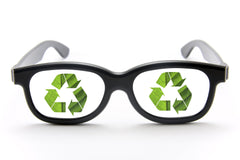Have you ever wondered if E-readers are better for your eyes? If so, you’re not alone. The problem is, the answer to this question is more complicated than you might think and depends on several factors.
If you love the convenience of an e-reader but aren’t sure if the e-ink display could hurt your eyes over the long run, then the following information is what you need to know.
Choosing the Right E-Reader for You
The displays on e-readers fall into two categories:
- Liquid crystal displays (LCD)
- Electronic ink (E-ink)
LCDs are what you see on tablets, smartphones, and computer screens. They emit light from the screen right to your eyes. This type of display is useful for indoor reading as well as dimly lit environments.
E-ink displays are present in devices such as Amazon’s Kindle and Barnes & Noble’s Nook. The light shines evenly on the screen rather than toward your eyes. These displays mimic ink on printed paper and are suitable for outdoor use or when sunlight is abundant.
Whichever display you select, nothing beats the convenience of having tons of reading materials to choose from all in one device. Also, e-readers usually have a long battery life, so you can read to your heart’s content and be immersed in your favorite stories, news reports, and periodicals.
With all these benefits, you may wonder if there’s a downside. For example, many people ask, “Do e-readers hurt your eyes?”.

Do E-Readers Cause Eye Strain?
Eye strain from an e-reader is possible, but the answer is a little complicated.
Some of the factors that contribute to e-reader eyestrain are the screen’s glare and how long you look at the screen. Glare is the light that goes inside your eye and scatters, distorting vision. The longer you stare at a screen, the harder the focusing muscles in your eyes have to work harder to keep the image in focus, which causes eye strain.
E-ink closely resembles ink on printed paper; therefore, it doesn’t cause as much glare and reduces eye strain. The light from an E-ink display also doesn’t shine into your eyes like an LCD screen. In sunny conditions, the print is easier to see, so your eyes don’t have to strain as much to keep it in focus. But on the other hand, in dim light, your eyes have to work harder to see the print.
Modern LCDs have a higher resolution and provide a sharper image on the screen. But, because the light is directed toward your eyes, it potentially causes more glare and fatigue. In outdoor conditions, with lots of sunlight, the screen gets washed out and is harder to see, making your eyes work harder. But indoors, the display becomes easier to see, especially when you adjust the brightness to suit your room’s lighting.
Another way to avoid eye strain from an e-reader is to purchase a good pair of blue light filtering glasses from a retailer like ReadingGlasses.com. They have a large selection of blue light readers to match any style.
Which Display Is Right For You?
Each type of e-reader display has its strengths and weaknesses. You have to consider the kind of environment you’re reading in and choose the correct display so you can get the most out of your reading experience. However, the most crucial factor to consider is that you have to rest your eyes periodically to avoid eye strain and fatigue.
Happy reading!




